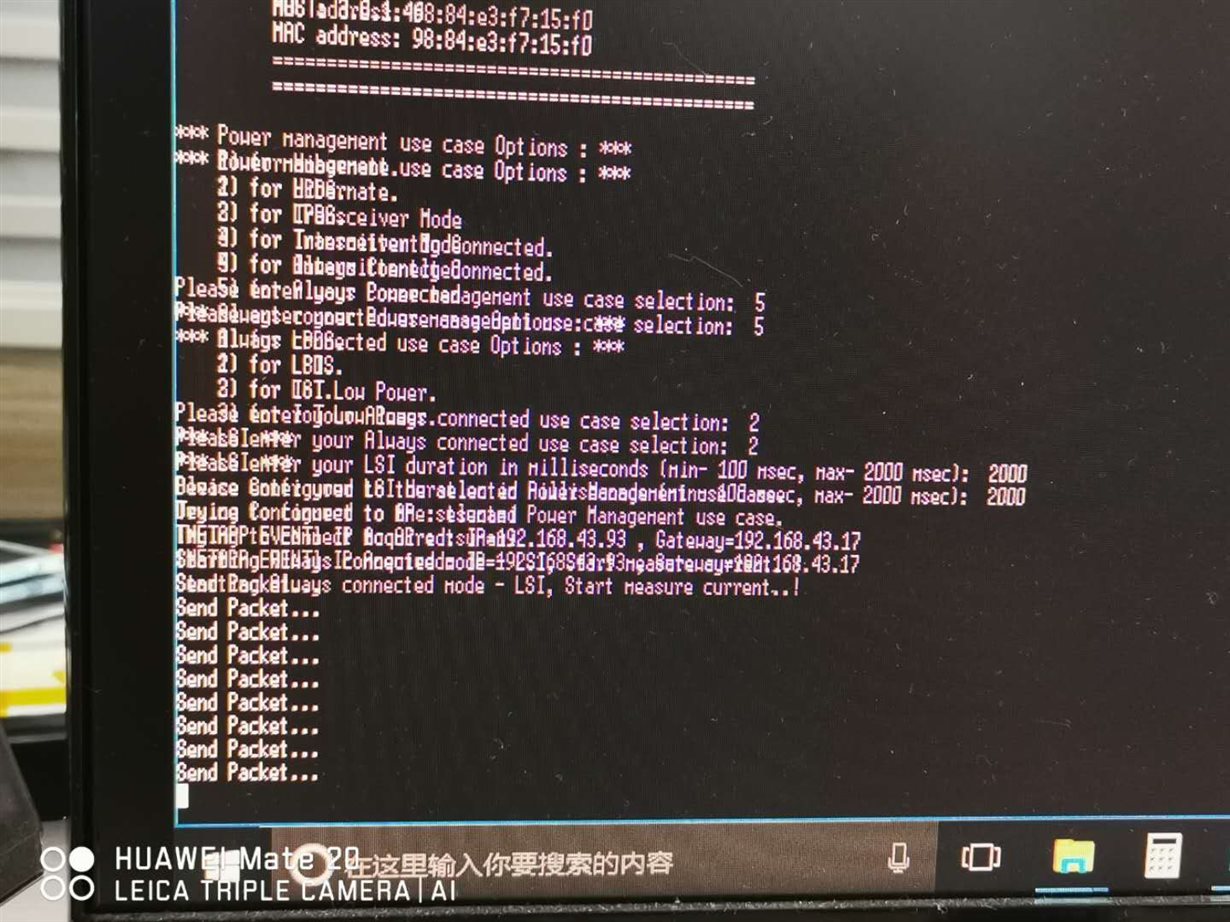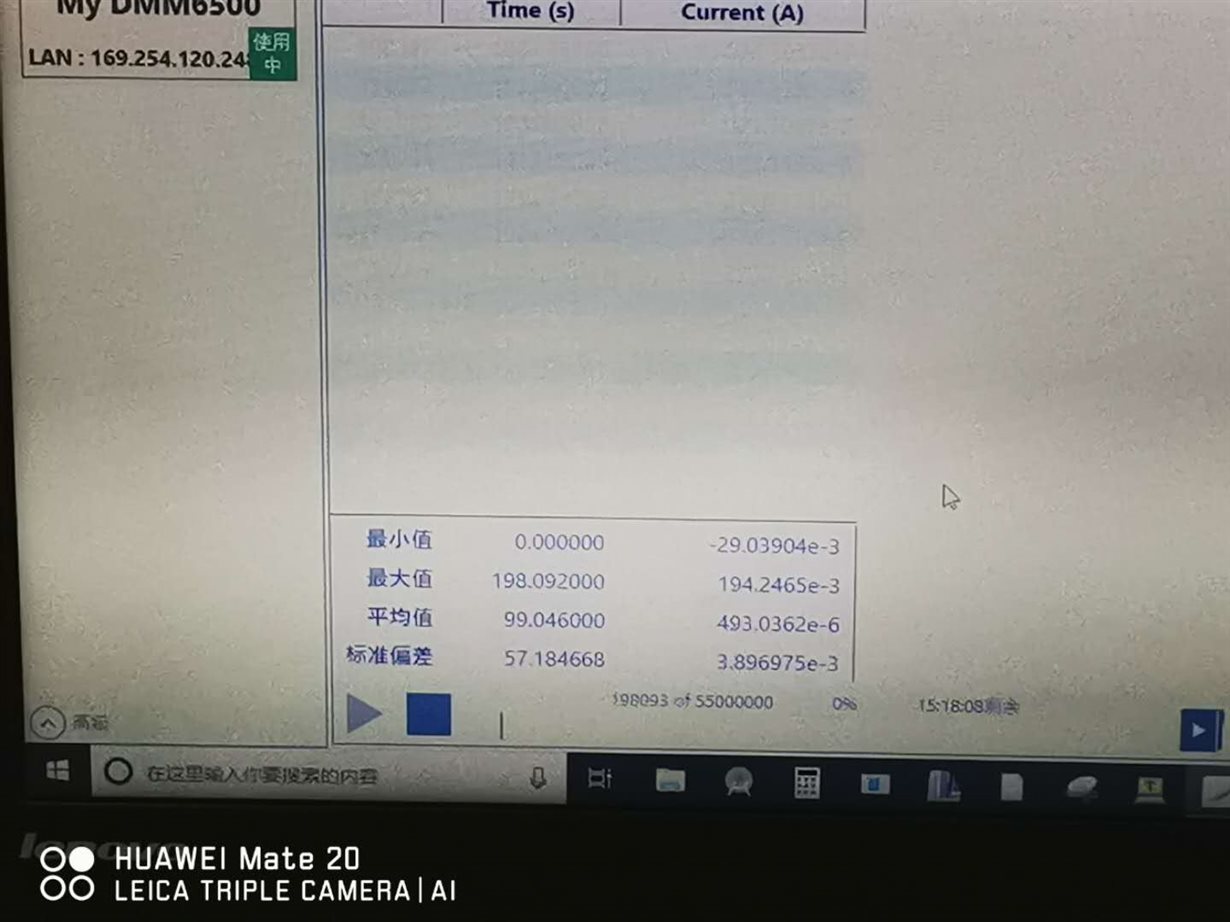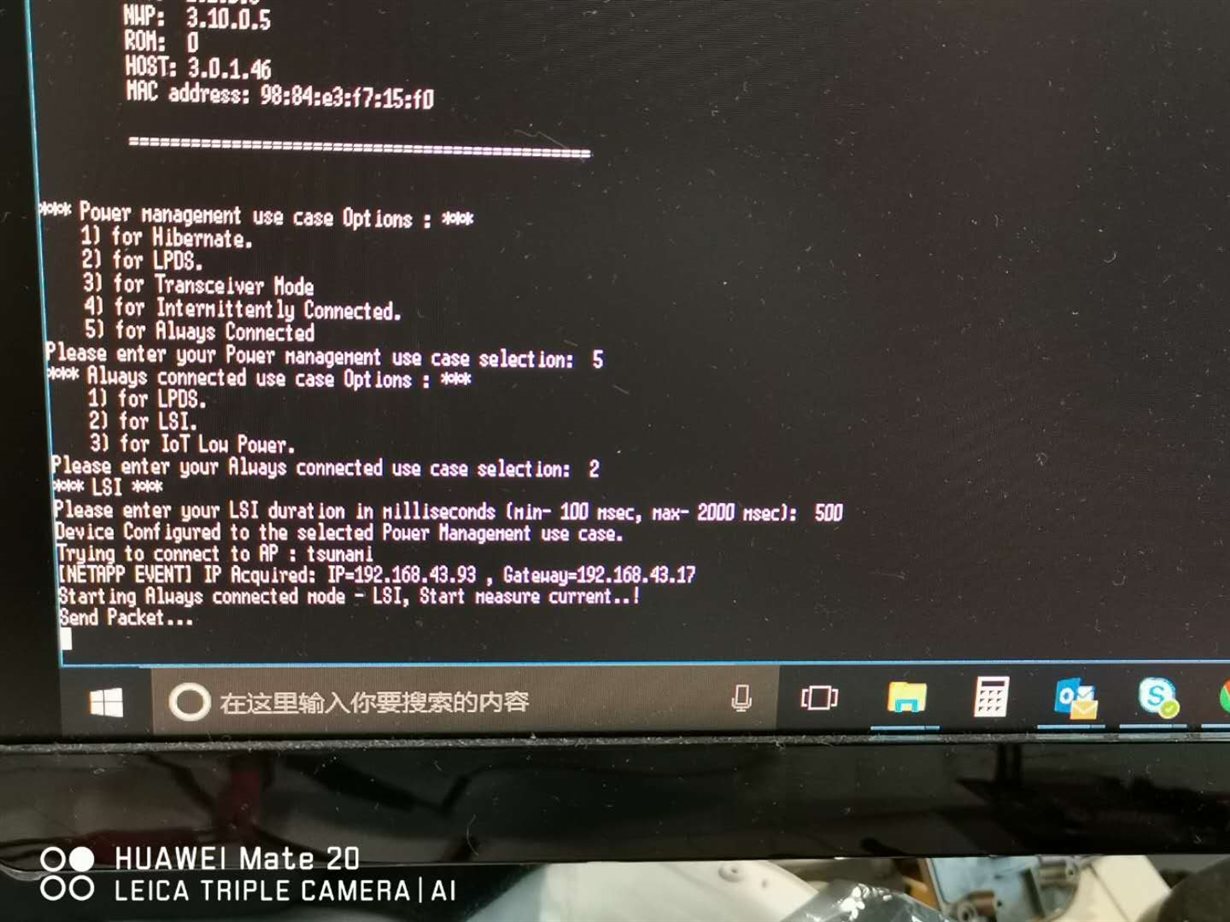Other Parts Discussed in Thread: CC3120
Tool/software: TI-RTOS
 e made ELOCK CC3220, follow CC3120, CC3220 SimpleLink ™ wi-fi ® Internet - on - a chip ™ Networking Subsystem Power Management test average Power consumption, burn power_measurement. Bin to the development board, UART print data and select (Always - Connected Current, 2000 milliseconds links interval), measured by the average Power consumption in 490 ua, and the data on the documents about 200 ua, as follows
e made ELOCK CC3220, follow CC3120, CC3220 SimpleLink ™ wi-fi ® Internet - on - a chip ™ Networking Subsystem Power Management test average Power consumption, burn power_measurement. Bin to the development board, UART print data and select (Always - Connected Current, 2000 milliseconds links interval), measured by the average Power consumption in 490 ua, and the data on the documents about 200 ua, as follows
Always-Connected Current, 500 ms link interval, the actual test power consumption is as follows
The information for the test platform and test development board is as follows
Could you please help me check if there is anything wrong with the setting or test method? Thank you





